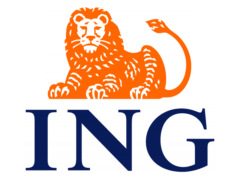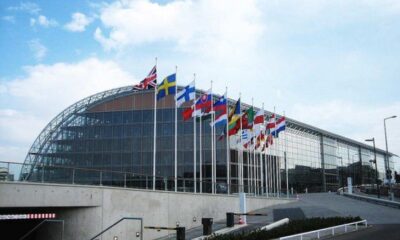

Economy
ING Pubilish EU Manufacturing Report
ING’s Senior Economist has published a report that highlights opportunities and challenges in the European manufacturing industry. The industry is changing rapidly, shifting towards a more “use” rather than “ownership” business model. Technology is playing an important role in the innovative change which should ultimately pave the way for a circular economy.
In his latest report, ING’s Senior Economist Jurjen Witteveen, looks at capital goods manufacturers, exploring the main opportunities and challenges in this rapidly changing business scenario and how this is accelerating the move towards a circular economy.
In 1995, about 66% of labour income was generated from production activities. Two decades later, this figure has declined to around 56%. Companies are becoming increasingly aware of how to capitalize on their knowledge of products and markets for their clients. By improving activities in the maintenance, marketing, financing and utilisation areas and removing excess risk, they enable their customers to concentrate on core activities.
In his analysis, Witteveen envisages a conceptual framework demonstrating how Original Equipment Manufacturers (OEMs) can evolve their business model across the so-called “stairway to circularity”:
Stage 1 – The maintenance model: building a customer relationship
- Manufacturers can progress from the basic product sales level to a maintenance model, where more technical services such as installation and day-to-day control are provided
- Technology is a key driver – the knowledge gap between the manufacturer and the customer leads to greater opportunities for service provision
- The transition is usually facilitated by an existing structural customer relationship
Stage 2 – The service model: providing the customer with a care-free solution
- Competitive pressure, critical clients and regulatory burdens means that customers are increasingly looking for “care-free solutions”, with lower risk greater access to additional services
- The service model goes beyond the maintenance solution to focus on the retention of ownership of a capital goods by the manufacturer and performance contracts
- Technology is once again an enabler – big data allows the manufacturer to perform monitoring and maintenance with optimum efficiency
Stage 3 – The circular model: the sustainable solution
- The ultimate goal is a transition to a circular model – this is a combination of greater sustainability and lower risk for the customer
- Products and materials are reused and raw materials retain their value
- This is achieved by manufacturers retaining control over the product throughout the entire lifecycle
- The trend towards a modular approach to manufacturing brings the circular economy goal closer
Jurjen Witteveen at ING Economics Department said: “The high level of potential for transformation of the capital goods industry presents significant opportunities, but also comes with challenges for the participants. It requires a consistent investment in technology, workforce and provision of liquidity.
“Despite the great benefits, the re-use and recycle of capital goods at the end of their technical life is still an imperfect process. Equally, the demand for circular products among consumers is still very limited. Nevertheless, sustainability of business models is creeping up the agenda of public authorities and large corporations, so we can expect an increasing appetite within the manufacturing industry as well.”


 Features10 months ago
Features10 months agoWhat is the Eco-Friendliest Option to Wash Your Dishes?

 Environment12 months ago
Environment12 months agoBuilding a Career in Green Construction: Tips and Insights

 News11 months ago
News11 months ago5 Ways Fleet Maintenance Software Can Help Businesses Be More Eco-Friendly

 Features10 months ago
Features10 months agoAddressing Pressing Ethical Concerns with Crypto Exchanges





























